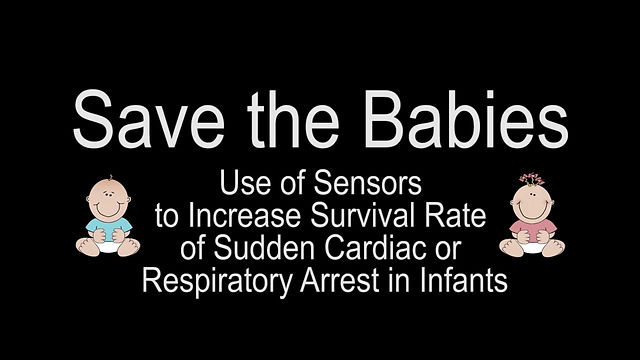Bioinstrumentation Class Project
Clemson University, January 2017 - May 2017
Sleep can be a particularly concerning time for parents with babies. While a baby sleeps, parents are unable to constantly monitor them, which leads to concern that the baby could die of sudden infant death syndrome (SIDS) or one of the other major sudden unexplained infant deaths (SUIDs), such as accidental suffocation or strangulation, especially if the baby suffers from sleep apnea. Sudden infant death syndrome is an issue that has been prevalent for years; however, due to more parental education and new crib designs, the rate of SIDS has been decreasing over the past decade. Still, it remains the leading cause of death among healthy babies, killing over 2000 babies in the United States every year (Murphy, Xu, & Kochanek, 2013).
In addition to the risk of SIDS, there is a high risk of accidental suffocation during sleep, due to improper bedding or movement and subsequent entrapment between pieces of the crib. The chances of this occurring only increase with first-time or extremely tired new parents who may overlook a potential hazard. Even though the overall chances of either of these issues occurring are small, they are enough to concern many parents, especially those who have just had their first child.
The goal of this project was to develop both a cardiac and a respiratory sensor to monitor a baby’s heart rate and breathing, particularly during sleep. These sensors will be configured to send an alert to the baby monitor or another interface, like a phone app, when the heart rate or breathing rate reaches below a certain threshold, and allow the parent to monitor these rates in real-time. As different physiological conditions could change these threshold rates among different babies, these sensors will be able to be programmed by physicians to be specific to a particular baby. Although these sensors will be unable to prevent SUID or treat any disease, they will be able to give parents a better idea of their child’s health, allow parents to be more proactive in case of emergency, and give parents peace of mind while their child sleeps.
Specific Aim 1: To determine how to best monitor respiration in the baby. Low-cost, easy-to-use sensors, as well as accelerometers, will be examined. However, accuracy should not be given up in order to produce a cheaper alternative.
Specific Aim 2: To determine a low cost and easy to use heart rate sensor that can detect small changes in the infant’s heartbeat. This sensor should be able to filter out enough of the surrounding noise so that the reading will be relatively accurate. It should thus be able to filter out some of the noise that will result from movement.
Specific Aim 3: To integrate the sensors into a comfortable system to allow parents to easily place the sensors on the baby. The sensors should not cause interference that will affect their capacity to measure respiration and heart rate. Both sensors should be able to transmit their information to the user interface and should be able to create an alarm if there is an issue with either heart or breathing rate.
Specific Aim 4: To create a user interface that allows for alerts to be given if the infant is in trouble. The interface should store the data so that it can be shown to a physician if needed. The interface should also allow physicians to program the specifications that will cause an alert.
Source: Murphy, S. L., Xu, J., & Kochanek, K. D. (2013). Deaths: Final data for 2010. National Vital Statistics Reports, 61(4).
